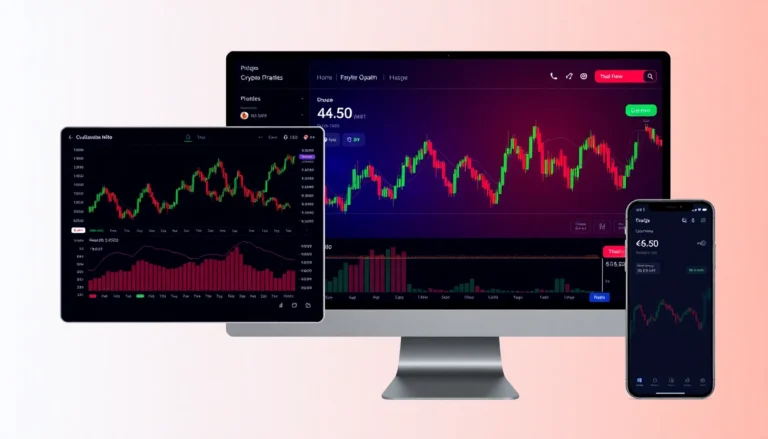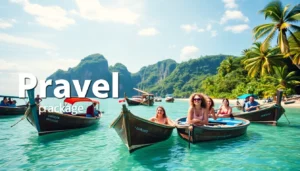Introduction to Mount Rinjani
Nested within the stunning landscape of Lombok, Indonesia, Mount Rinjani stands as a towering testament to the island’s volcanic activity and natural grandeur. As the second-highest volcano in Indonesia, it reaches an elevation of approximately 3,726 meters (12,224 feet) above sea level, offering explorers and nature enthusiasts a challenging yet rewarding adventure. Its significance transcends mere elevation; Mount Rinjani holds deep cultural, historical, and ecological importance for local communities and travelers worldwide. Whether you’re a seasoned hiker, an ecological enthusiast, or an interested traveler contemplating Indonesia’s diverse terrains, understanding the essence of Mount Rinjani provides valuable insights into one of Southeast Asia’s most iconic natural wonders.
Geographical Location and Significance of Mount Rinjani
Mount Rinjani is situated on Lombok island, part of the Lesser Sunda Islands in Indonesia, within the boundaries of Rinjani National Park. The volcano’s geographical location confers upon it a strategic position as a key feature of the eco-biodiversity and geological makeup of the region. It lies approximately 60 kilometers northwest of the island’s capital, Mataram, and dominates the northern part of Lombok. The volcano’s caldera contains a stunning crater lake, Lake Segara Anak, which remarkably lies at an elevation of about 2,000 meters (6,562 feet). This lake has a hot spring and a small island within it, which adds to its ecological and scenic appeal. The mountain’s prominence is not only physical but also cultural: Rinjani is considered sacred by local Sasak and Lombok communities, embodying centuries of spiritual reverence and local legends.
Geologically, Mount Rinjani is an active stratovolcano formed from layers of lava flows, tephra, and ash deposits accumulated over thousands of years. Its ongoing volcanic activity plays a pivotal role in shaping the island’s landscape and enriching the soil, fostering lush green forests that thrive on volcanic nutrients. The volcano’s multifaceted significance underscores its importance as a geopark and a vital part of Indonesia’s natural heritage, contributing to biodiversity and ecological balance in the region.
Historical and Cultural Importance in Lombok
Historically, Mount Rinjani’s eruptions have shaped geological and cultural narratives across generations. The most notable eruption was the 1257 volcanic event, linked to the ancient volcanic mountain known as Gunung Samalas, which profoundly impacted local climate and global weather patterns by releasing a colossal volume of volcanic ash. This eruption is considered one of the largest in recorded history, influencing ecological shifts and even regional crop yields. The mountain, with its looming presence, is woven into the cultural fabric of Lombok’s indigenous communities, who regard it as a divine entity and a symbol of natural power.
Folklore and spiritual practices anchor the mountain’s sacred status. Local legends speak of spirits inhabiting the crater and surrounding forests, which are revered in traditional ceremonies. The annual Rinjani Festival and various local rituals feature offerings and prayers, seeking blessings for fertility, crop abundance, and protection from natural disasters. Such cultural gestures foster a harmonious human-nature relationship, emphasizing conservation and respect for this majestic volcano.
Furthermore, Mount Rinjani’s role in traditional livelihoods—such as farming, hunting, and spiritual ceremonies—illustrates its integral position in Lombok’s societal life. Its presence continually influences the cultural identity and religious practices, making it not just a natural monument but also a spiritual landmark for the island’s people.
Unique Features of Indonesia’s Second-Highest Volcano
Mount Rinjani is distinguished by several extraordinary features that set it apart from other volcanoes in the region and globally. Its iconic crater lake, Lake Segara Anak, is one of the largest and deepest volcanic lakes in Indonesia, with a vibrant, emerald hue that shifts with the seasons. The lake is an active geothermal zone, with occasional small eruptions and hot springs that attract scientists and tourists alike.
The mountain’s diverse terrain—from lush rainforests at its base to rocky volcanic ridges and snow-capped peaks—offers unparalleled biodiversity. The presence of endemic flora and fauna, some of which are unique to the island, enhances its ecological significance. The stratovolcano itself is a complex structure, featuring multiple volcanic cones, hot springs, fumaroles, and volcanic vents.
Another unique aspect is the extensive trekking network around Rinjani, which includes several established routes of varying difficulty levels. The most popular trail, from Sembalun and Senaru, spans approximately 27 kilometers of challenging terrain, culminating in awe-inspiring views and the chance to witness active volcanic phenomena firsthand. The combination of natural beauty, geological complexity, and cultural heritage makes Mount Rinjani a truly exceptional natural marvel in Southeast Asia.
Planning Your Trekking Adventure on Mount Rinjani
Best Seasons and Weather Considerations for Trekking
Optimal trekking seasons for Mount Rinjani are during the dry seasons, typically from April to October. During this period, weather conditions are more predictable, with clearer skies, less rainfall, and manageable temperature fluctuations. The peak trekking months are July and August, coinciding with holiday seasons, but be prepared for crowded trails. During the rainy season (November to March), trails become slippery and hazardous due to mud and frequent downpours, increasing risk for trekkers.
Temperature varies significantly with altitude, starting from around 25-30°C (77-86°F) at the base to near freezing near the summit. Proper packing and acclimatization are vital to ensure safety and enjoyment.
Preparation Essentials: Gear, Fitness, and Permits
Preparing for a Mount Rinjani trek requires meticulous planning. Essential gear includes sturdy hiking boots, layered clothing for variable temperatures, waterproof jackets, gloves, hats, and personal safety equipment such as headlamps and trekking poles. As the trek can take from 2 to 4 days, camp gear and sufficient water supplies are necessary.
Physical fitness is crucial; prior endurance training, including cardio and leg strength exercises, significantly enhances the experience. Altitude acclimatization is essential to prevent altitude sickness, especially when ascending above 3,000 meters.
Permits are mandatory for crossing park boundaries. It’s advisable to secure guided tours through reputable operators, who handle permits, safety protocols, and local support, ensuring compliance with park regulations and community engagement.
Guided Tours and Local Guides: How to Choose
While independent hikes are possible, guided treks offer safety, local expertise, and cultural insights that elevate the experience. Reputable tour operators provide comprehensive packages, including permits, transportation, accommodations, and experienced guides familiar with terrain and emergencies.
When selecting a guide or company, verify credentials, read reviews, and confirm adherence to responsible tourism practices. Local guides from Lombok’s communities often offer authentic cultural interactions, supporting the local economy and fostering sustainable tourism.
Exploring the Natural Wonders of Mount Rinjani National Park
Major Attractions: Lakes, Waterfalls, and Hot Springs
The park’s crown jewel, Lake Segara Anak, offers breathtaking vistas and activities such as boat rides and hot springs. The hot springs, especially those at sumber Hot Springs area, provide relaxing thermal waters, perfect for unwinding after a tough ascent.
Rinjani Waterfalls, such as Tiu Kelep and Sendang Gile, are accessible via short hikes from the surrounding villages. These pristine waterfalls cascade into natural pools amid lush forests, providing serene spots for refreshment and photography.
Other attractions include the Petik Sembalun, a scenic agricultural area with terraced rice fields, and the panoramic viewpoints at Pelawangan, which offer spectacular vistas of the crater lake and surrounding islands.
Wildlife and Flora Endemic to the Park’s Eco-zone
Rinjani National Park harbors over 260 species of birds, some endemic like the Lombok Hawk-Eagle, along with a variety of mammals such as wild boars, monkeys, and the elusive Sunda clouded leopard. The park’s rich ecosystems support unique plant species, including rare orchids, medicinal herbs, and tall bamboo.
Conservation efforts focus on protecting these habitats from illegal logging, poaching, and habitat encroachment, emphasizing the importance of responsible tourism in maintaining biodiversity.
Conservation Efforts and Responsible Tourism Tips
Active management includes park zoning, reforestation initiatives, and educational programs for visitors. Visitors are encouraged to respect wildlife, carry out waste, stick to designated trails, and support local conservation projects. Employing responsible tourism ensures the preservation of Mount Rinjani’s ecological integrity for future generations.
Safety Tips and Challenges During the Rinjani Trek
Common Hazards and How to Avoid Them
The primary hazards include sudden weather changes, loose volcanic ash, steep descents, and altitude-related issues. To mitigate these, ensure proper gear, stay informed about weather forecasts, and follow guides’ instructions. Trail markers are vital; sticking to designated paths avoids disorientation or accidents.
Night trekking or early morning hikes pose risks of decreased visibility and disorientation. Adequate lighting and navigation tools are essential.
Altitude Sickness and Acclimatization Strategies
Symptoms of altitude sickness include headache, nausea, dizziness, and fatigue. Strategies to prevent or reduce symptoms involve gradual ascent, proper hydration, and pacing oneself. Spending an extra day at intermediate altitudes or pre-trekking acclimatization hikes can significantly improve the physical adaptation.
Emergency Procedures and Park Regulations
In case of emergencies, guides are trained to administer first aid and coordinate evacuation if necessary. Carrying a basic first aid kit, communication devices, and emergency contacts is crucial. The park enforces regulations such as limited campfire use, waste disposal, and restricted access to protected zones, ensuring the mountain’s ecological health and visitor safety.
Experiencing the Culture and Community of Lombok
Local Customs, Traditions, and Festivals
Lombok’s rich cultural tapestry manifests through its traditional Sasak and Balinese influences. The Sasak people celebrate unique ceremonies like the Bau Nyale fishing festival, which coincides with the full moon and honors the sea spirit, reflecting deep reverence for nature and ancestral spirits.
Throughout the year, various rituals, dances, and festivals showcase Lombok’s vibrant heritage, inviting visitors to participate respectfully and learn about local beliefs tied to Mount Rinjani’s spiritual significance.
Supporting Local Economy Through Sustainable Tourism
Engaging with local guides, purchasing handmade crafts, and staying in community-based accommodations ensure that tourism benefits the communities directly. Responsible travelers should prioritize eco-friendly practices, avoid disrupting local customs, and contribute to ongoing conservation projects.
Sharing Authentic Lombok Experiences Beyond the Mountain
Venture beyond the trek to explore Lombok’s pristine beaches, such as Senggigi and Kuta, or cultural sites like Sukarara traditional weaving villages. Participating in cooking classes or volunteering with local conservation efforts can deepen your understanding and connection to the island’s vibrant culture.





